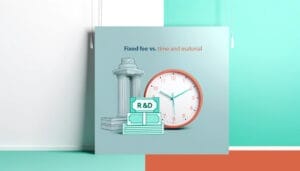
Federal research and development (R&D) tax credits have been available to businesses for more than three decades. However, many architects simply don’t realize the tax credits are available to them or don’t understand which activities qualify. While the Tax Cuts and Jobs Act made many changes to our tax code, it retained the current permanency of R&D credits, understanding the importance of U.S. investments towards innovation. And architects as well as engineers and contractors qualify for these valuable tax credits.
R&D Tax Credit Benefits
The R&D tax credit is meant to incentivize companies to invest in innovation and technological investments so that the U.S. can remain on the forefront of those advancements. Two-thirds of U.S. states also offer tax credits for R&D activities. The credit, which is designed to reimburse companies that develop new products, processes, or inventions, offers a significant percentage back to the company for qualified research activities and qualified research expenses. These savings can offset wages and salaries paid for qualified activities. You do not need to be a large company to qualify.
R&D tax credits can result in tens of thousands of dollars, even more than $1 million for an architecture company.
View our video below or read on to learn more about R&D tax credits for architects.
The Qualitative Four-Part for Qualifying R&D Research
A simple four-part test helps to determine which activities constitute qualified research according to criteria established by the IRS:
- Permitted Purpose: The activities must relate to new or improved business components, function, performance, reliability, and quality
- Technological in Nature: The activity performed must fundamentally rely on principles of physical or biological science, engineering, and computer science
- Elimination of Uncertainty: The activity must be intended to discover information to eliminate uncertainty concerning the capability, method or design for developing or improving a product or process.
- Process of Experimentation: The taxpayer must engage in an evaluative process that is capable of identifying and evaluating more than one alternative to achieve a result. This may include modeling, simulation or a systematic trial and error methodology.
Potentially Qualifying Activities for Architects
The following represents a sample list of qualifying activities:
- Developing unique energy-efficient features
- Developing schematic designs
- Developing site plan to overcome site features
- Developing elevation drawings for planning
- Designing unique lateral force resistance systems
- Developing plans to meet unique/specific load requirements
- Determining alternative materials to improve design or meet specific requirements
- Improving acoustical qualities of a structure
- Developing unique heating, cooling, or ventilation systems
- Achieving LEED certification
R&D Tax Credit Study
Claiming R&D tax credits requires a fair amount of documentation required by the IRS. That’s why it’s important to seek professional help from a consultant with a strong expertise in helping architects successfully claim these valuable tax credits. Our R&D experts dig much deeper into the fundamentals of your business activities—incorporating operations, engineering, financial, and tax expertise that results in more credits and meticulous documentation that is necessary to support your activities, costs, and credit. There is a direct correlation between the amount of your defensible credit and the expertise of the advisor performing the tax credit study.
Learn More R&D Tax Credits for Architects
The R&D tax experts at Engineered Tax Services have helped companies of all sizes across the U.S. identify and qualify these expenditures and receive the tax benefits they have been missing. Our process begins with an R&D Tax Credit Qualification Analysis to make sure your company qualifies for the R&D tax credit.
To learn more about R&D tax credits for architects, please complete the form on this page. For immediate questions about tax deductions for architects, call Engineered Tax Services at (800) 236-6519 or check out our R&D tax credit page for more information.




